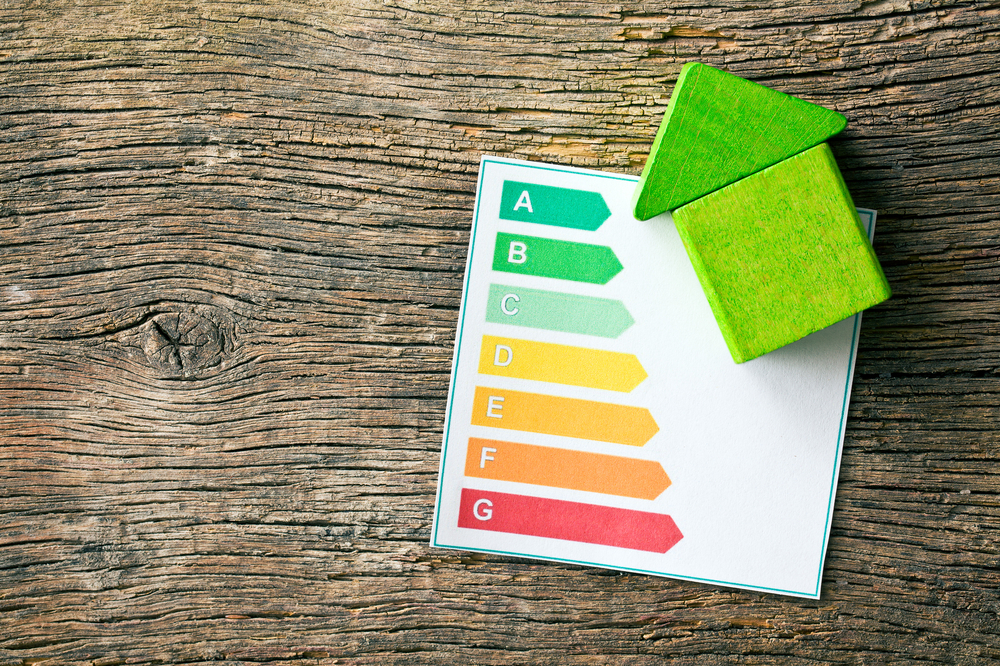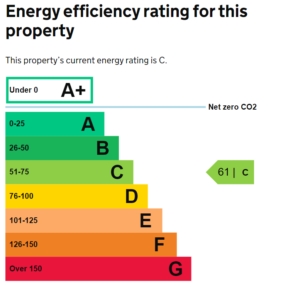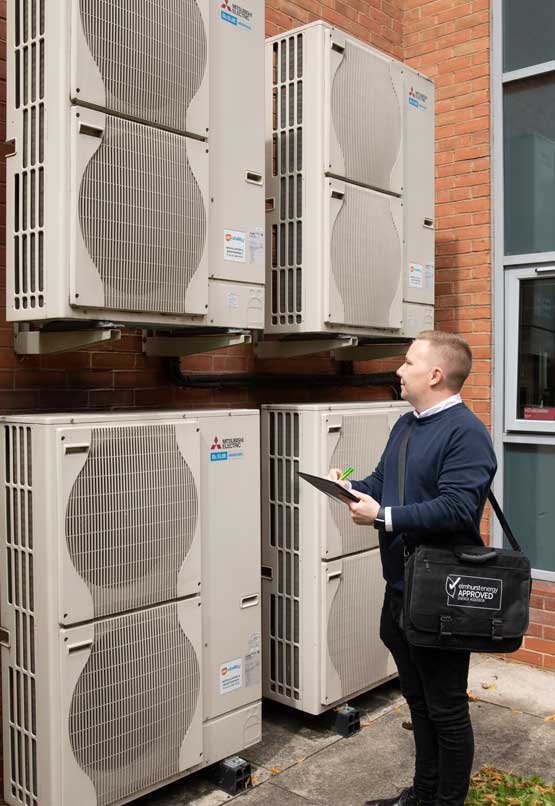What is a Commercial EPC?
A Commercial, or Non-Domestic, Energy Performance Certificate (EPC) displays the energy performance of a commercial building on an A+ to G scale (A+ indicating net zero and G being the worst performing).
The rating is based on the estimated carbon emissions of the building, unlike EPCs for existing dwellings which are based on a property’s estimated running costs.
In addition to this, the EPC document will also show:
✅ a breakdown of a property’s energy performance
✅ recommendations for improvements (available as a separate document)

Regulations in England, Wales and Northern Ireland
You need a Non-Domestic EPC in order to build, sell or let a non-domestic property.
Minimum Energy Efficiency Standards (MEES) require landlords in the private rented sector to have an EPC with an E rating or higher before they can issue a new lease for a property.
A new EPC is not required every time a property is let or sold provided it is no more than 10 years old.
Find a Non-Domestic Energy Assessor Near You
Regulations in Scotland
Similar to the rest of the UK, you also need a Non-Domestic EPC in order to build, sell or let a commercial building in Scotland. There is currently no minimum energy standards in Scotland for private rented commercial building, but this is expected to be introduced in the near future. A Non-Domestic EPC in Scotland is valid for 10 years.
Commercial buildings with a floor area of more than 1,000 m² are subject to Section 63 regulations. The rules are triggered upon the sale or lease to a new tenant, and stipulate that an EPC must be carried out along with a further assessment to produce an ‘Action Plan’.
The Action Plan identifies targets for improvement of the carbon and energy performance of the building and how these targets would be met. The Action Plan must be made available for prospective buyers and tenants.
Find a Non-Domestic Energy Assessor or Section 63 Advisor
Where Do I Find An Existing EPC?
To find an existing EPC for a property, search its postcode on the following sites:
Property in England, Wales or NI: https://www.gov.uk/find-energy-certificate
Property in Scotland: https://www.scottishepcregister.org.uk/
How Do I Read An EPC?
The first section of a commercial EPC will display the property’s energy rating, address, certificate number and the date which it is valid until.
Further down it will display the energy rating and score. The score is based on a numerical scale of 0-150, where less than 0 is indicative of net zero and 150+ being the worst performing.
Guidance on how to improve the property can be found in the recommendation report.
You can find the assessor’s details who carried out the EPC on the bottom of the EPC, along with the accreditation scheme they’re a member of.
The energy efficiency rating will be displayed on an A+ to G scale. The least efficient buildings will be rated G and the most efficient will be rated A+.
In Scotland, the potential rating is also shown , which is the energy efficiency rating after all recommendations have been applied to the property.
For England, Wales and Northern Ireland the current EPC rating will be shown at the top of the EPC.

The rating is actually based carbon emissions such as the type of fuel used for heating, hot water, lighting and ventilation.
Currently if the property uses electricity for heating it will score higher on the energy efficiency rating than a property which uses gas. This is due to the new carbon factors introduced in the latest version of the Building Regulations, which reflect the latest decarbonisation of the electricity grid.
You will be provided with a list of recommendations/recommended measures for improving the property’s energy performance.
Recommended improvements are grouped by the estimated time it would take for the change to pay for itself. The assessor may also make additional recommendations.
Each recommendation is marked as low, medium or high to show the potential impact of the change on reducing the property’s carbon emissions.

What is involved in a commercial energy assessment?
If you need a commercial EPC you should contact an accredited Non-Domestic Energy Assessor (NDEA). These professionals will visit your property to collect data/information such as room dimensions, lighting, building orientation insulation levels and heating systems. An EPC for a new building would require similar information, but would not involve a site visit.
The assessor will need access to every part of the building as they will need to take measurements and photos to support their assessment. Landlords will be pleased to know that the non-domestic energy assessment is non-invasive, with no drilling or hammering into walls. The amount of time an assessment takes is dependent on the size and complexity of the building.
EPCs in Scotland will typically be printed and provided to you, however for the rest of the UK the EPC will be provided via an online link.
Levels of Non-Domestic Energy Performance Certificates
There are 3 levels of EPC for Non-Domestic buildings, including Level 3, level 4 and level 5. The Levels are reflective of the degree of complexity of a commercial building. A simple description of each level’s building type is shown below.
Level 3 – commercial buildings that are existing buildings with common characteristics and a simple air-conditioning system.
Examples: small shops, restaurants.
Level 4 – commercial buildings that have uncommon characteristics and will typically have more complex Heating, Ventilation, and Air Conditioning (HVAC) systems. Level 4 also covers any new build non-domestic building.
Examples: Large office buildings, large shops.
Level 5 – commercial buildings that have more specific features such as atriums, automatic blind control and complex ventilation. In depth modelling software is required for these buildings in order to determine their energy performance.
Examples: Airports, Shopping Centres, Skyscrapers.
